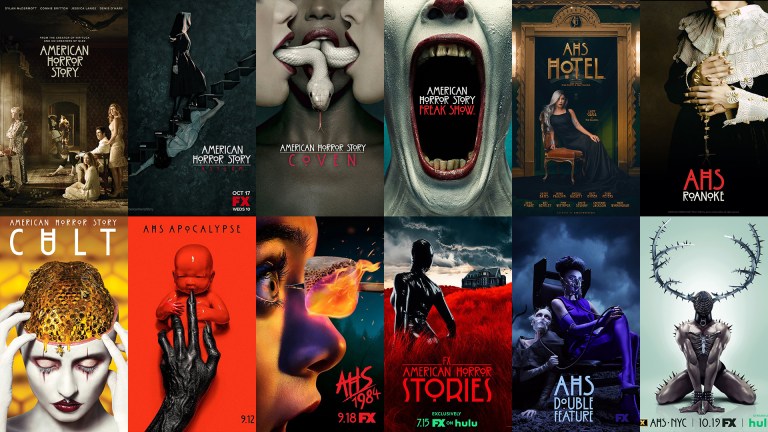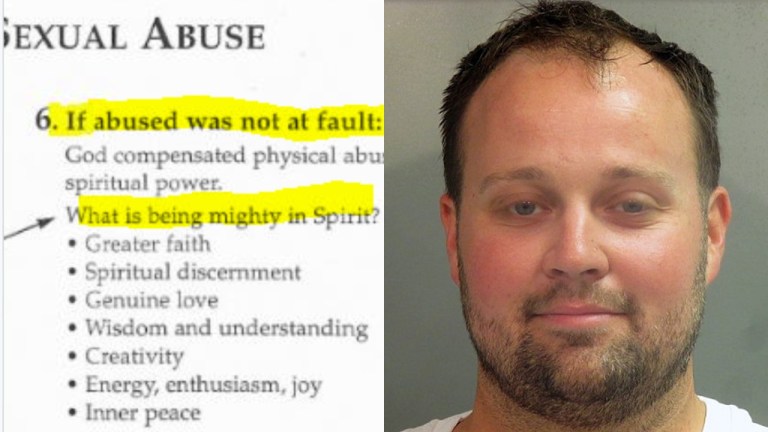How Pornography is Changing Millennial Men (Hint, The Sex Is Worse, Much Worse)
"All it had taken was a few cans of PBR and suddenly I was in a confessional with a girl who loved sex and hated what it had become."


Technically, I live in Los Angeles County. They make a lot of movies here. They make a lot of pornography here, too, though that is changing. A law passed in 2012, Measure B (technically the County of Los Angeles Safer Sex In the Adult Film Industry Act), requires male pornographic actors to wear condoms. It also requires adult film productions to obtain health permits before shooting. Violations of this ordinance will result in civil fines and criminal charges.
Porn is a big money maker, or at least it was until the internet made its product freely available, and what we’ve gained in health we’ve lost in production revenue. Film LA estimates that porn permits in the county have declined 95 percent since Measure B took effect, and most studios are moving their business to Las Vegas.
I live in LA county, but I’m often in Orange County. The parties are different, more laid back, and the beer is cheaper. While sitting on the back of a couch with a friend of a friend, I found myself sucked into that black hole of the house party wherein the subject gradually shifts from good-humored superficiality to stark, surprising seriousness.
The girl asked me what I thought about porn.
I shrugged and said it was out there, that I had seen plenty of it in college where clips were shared and discussed and even bookmarked by roommates, but that since college it rarely came up in conversation and, since moving in with my girlfriend, rarely came up on my screen. I laughed. She didn’t laugh. Rather, she smiled and took me deeper into her embattled psyche.
She described for me the awkward conversations and situations she’d found herself in with men she’d dated in the past few years, their misunderstanding of what she wanted in bed, their condescending attitudes to condoms, their ignorance of foreplay, their roughness – the things they said to her, the way they treated her. I was a few shades short of puzzled until I realized she was genuinely, acutely upset. All it had taken was a few cans of PBR and suddenly I was in a confessional with a girl who loved sex and hated what it had become.
I’m on the farther end of the Millennial spectrum, twenty-eight, and while free porn was available while I was losing my virginity, it was never a factor during those halcyon years. First of all, I lived at home with two siblings and a conservative single mother and limited computer access. Second of all, I tried to spend as little time at home and as much time riding in cars with girls as possible. I was committed to physical and emotional exploration in the real world. But I seem to be one of the last survivors of a twilight sexual ethic.
Pornography: Everywhere, All the Time
Browsing through Reddit, surfing down a video comments section, and perusing the general offerings of internet web series, one gets the sense that pornography has jumped from smutty sub-culture to generally acceptable pastime – at least among young males. And that’s bled over into the real world. It’s not only in your dorm room, it’s in your American Apparel ads.
The internet is both a blessing and a curse to our generation. On the one hand, we have an instant connection to everything: information and people alike. There is more free entertainment and oddness than one person can possibly browse in their lifetime, and that is part of its dark charm. But that darkness is vast, and browsers can easily lose themselves in a sea of links.
It is easier to communicate via text, it is easier to keep in touch online and it has always been easier and will always be easier to passively consume rather than actively pursue.
The internet is a second world in itself, one which delivers at the click of a button. The stress and disappointments of life cannot compete with it. That may sound excessively dire, but the convenience of this second world has altered men both socially and sexually.
Japan: Losing Human Sexual Contact
In 2008, Japan’s Ministry of Health, Labor and Welfare conducted a survey on male-female relations. They found that 17.5 percent of men between the ages of 16-19 had “no interest in sex or have an aversion to it,” with 11.8 percent of 20-24-year-olds reporting the same. Arguably, these are the ages when men are at their absolute randiest. One young man said that the problem was not that he lacked a sex drive but that “having sex with someone is ‘just too much of a bother.’”
Virtual sex is much more convenient, and virtual women, pillows stamped with the images of anime characters and sexual Real Dolls, have become popular enough that there is an entire subculture of men dedicated to them – not only in Japan but in America as well.
Dr. Kunio Kitamura, an obstetrician and gynecologist, has treated young men who complain of erectile dysfunction, a condition that typically affects males over the age of 50. Kitamura reports that the sex they watch online has left them “with a bad taste in their mouth for human sexual contact,” but their frequent masturbation has “satisf[ied] all their sexual needs.” They have been absorbed into the second world, with very physical consequences.
The Retreating Male Libido
Naomi Wolf, writing in New York Magazine, recalls the warning of Andrea Dworkin, a prominent anti-porn activist in the 1980s. Dworkin feared that easy access to pornography would turn men into monsters. But Wolf has discovered just the opposite.
“[Pornography] is not making men into raving beasts. On the contrary: The onslaught of porn is responsible for deadening male libido in relation to real women, and leading men to see fewer and fewer women as ‘porn-worthy.’ Far from having to fend off porn-crazed young men, young women are worrying that as mere flesh and blood, they can scarcely get, let alone hold, their attention.”
What women are experiencing is pornography’s gradual “mission creep,” a Pavlovian buzz (the male, onanistic orgasm) that lowers the value of real, willing but imperfect sexual partners in favor of “an endless stream of ever-more-transgressive images of cybersex slaves.”
Is it really so bad as that?
Pornography Becomes Addictive
Physical addiction creates chemical changes in the body. Adrenaline, testosterone, epinephrine, these are triggered when a person achieves a high from drugs or alcohol. The same chemicals are triggered during a sexual high. The same reward pathways light up, the same relief is received and, over time, the same stimulus is not enough to satisfy it. The more you put in, the more your body can tolerate.
The Italian Society of Andrology and Sexual Medicine studied 20,000 men who had begun watching pornography in their early teens. What they found was that by their middle twenties, some of these men had developed “sexual anorexia.” Sex itself gradually became stripped of enjoyment, their lust secondary to the compulsiveness of the masturbatory act. Moreover, the types of pornography they searched for became more hardcore over time. They built up an “immunity” to what they saw.
Rewiring the Brain
Doctor William Struthers of the University of Illinois at Chicago found that men who “fall deeper into the mental habit of fixating on [pornographic images]” create neural pathways that “set the course for the next time an erotic image is viewed. Over time these neural paths become wider as they are repeatedly traveled with each exposure to pornography. They become the automatic pathway through which interactions with woman are routed.”
In this way, the act of viewing pornography objectifies women into a step in the process of achieving the addictive rush (i.e. orgasm). “Porn,” writes Struthers, “turns sex into masturbation.” In these cases, when real sexual relationships occur, there is no reciprocative intimacy, only a compulsive, self-serving need. A point-and-click routine.
The Italian study posits that, apart from the sheer taboo of it, pornography may be used by young men to “counteract feelings of inadequacy or emotional torment they may have experienced.” But while it may initially be used as an escape, Struthers further claims that it has lasting psychological and physiological effects. Men who are addicted to porn became “controlling, highly introverted, have high anxiety, low self-esteem, depression” and experience disassociation from real life.
Turning Sex into a Product
In Pornified, Pamela Paul relates similar findings of psychologists at Texas A&M: “Pornography gives men the false impression that sex and pleasure are entirely divorced from relationships.”
This is further explored by Robert Weiss, founding director of the Sexual Recovery Institute. He writes,
“If a young man’s sexual experiences have exclusively involved using online porn as his primary vehicle to learn about sex and relationships, this young man may well struggle to develop the required skill-set to maintain healthy romantic and sexual partnerships…. In porn, there’s little talking, less seduction, no romancing and minimal – if any – tenderness displayed. Usually there is little kissing or foreplay. There is, however, an ever-changing stream of highly-arousing objectified body parts and sexual images.”
All of this, according to Texas A&M, combines to turn sex into “a product to consume,” something to be obtained (often for free), used and discarded.
“The Internet Is for Porn?”
A popular myth about the internet is that it is anywhere from one-third to 80 percent pornography. In 2011, Forbes dispelled the myth by consulting neuroscientist Ogi Ogas who, along with his colleague Sai Gaddam, amassed the largest collection of online pornography statistics in the world. According to them, a mere four percent of the internet is actually porn.
That four percent, however, gets a lot of mileage. In 2013, Paint Bottle put together an infographic on porn usage, discovering that porn sites received 450 million visitors per month, which is more than Netflix, Amazon and Twitter combined.
In this article, I’ve briefly touched on the physical and psychological effects of pornography on young males of the Millennial generation, also known as Generation Y. It is my contention that this generation’s issue with pornography is the same issue it confronts at every entertainment venue: Overexposure.
Outfitted with a mobile arsenal of internet-enabled gadgets, Millennials are exposed to more news, entertainment and titillation than at any point in recorded history. The internet is so bound up into the fabric of day-to-day life that not participating in that abyssal sea of data must be an active choice. But it’s easy to forget what one’s options are when one has infinite options.
Pornography is an extension of the internet; it does not exist by itself. And accessing pornography requires virtually no effort. There are no tolls, no restrictions and an endlessly updating stream of new content. Like the internet itself, it is a messy, perpetually gushing fountain, pun absolutely intended.
The question that needs to be asked is not whether porn is good or bad for an individual but how much choice young men have in what they are now being exposed to. The internet is teaching entirely new and passive methods of socialization, entirely passively, and all that is required to learn from it is sitting down and staring at a computer screen for hours on end.
The Twin Dangers of Addiction and Enculturation
Human beings are naturally curious, and we’re most curious about those things that excite us. It’s not surprising at all to believe the internet is mostly pornography, because sex is the most basic of the many addictions the internet enables. The danger of its porn is not only that it provides a stimulus without effort but also that that stimulus comes pre-packaged with a misogynistic philosophy.
The best example of this comes from Adam Savage (of Myth Busters fame) in an episode of The Moth. While trying to teach his son about sex in the age of digital pornography, he explains to his audience that he finally realized this disturbing truth:
The internet hates women. And I recognize there’s probably those out there who think that’s an incredibly broad brush to paint the internet with, but let me put it this way: If you could look in someone’s brain the way you search the internet, and the internet was a dude, that dude has a problem with women.”
How Pornography Is Changing Millennial Women
I do not have anything approaching the time and resources to definitively say whether or not the internet hates women, nor to conclude with any certainty that internet pornography is destroying young men’s brains. What I can definitely say, however, is that the availability of internet porn has changed us – how we view sex, how we pursue sex, how we have sex. And whenever I hear this notion dismissed, I think back on that party in Orange County, those few cans of PBR, and that friend of a friend sitting on the back of a couch. She really enjoyed sex, but she hadn’t felt comfortable having sex with a man in a very long time.
As Naomi Wolf wrote,
“When I came of age in the seventies, it was still pretty cool to be able to offer a young man the actual presence of a naked, willing young woman. There were more young men who wanted to be with naked women than there were naked women on the market. If there was nothing actively alarming about you, you could get a pretty enthusiastic response by just showing up. Your boyfriend may have seen Playboy, but hey, you could move, you were warm, you were real. Thirty years ago, simple lovemaking was considered erotic in the pornography that entered mainstream consciousness: When Behind the Green Door [a 1972 pornographic film] first opened, clumsy, earnest, missionary-position intercourse was still considered to be a huge turn-on.”
I’m sure to some readers that all sounds quite boring. ![]()




